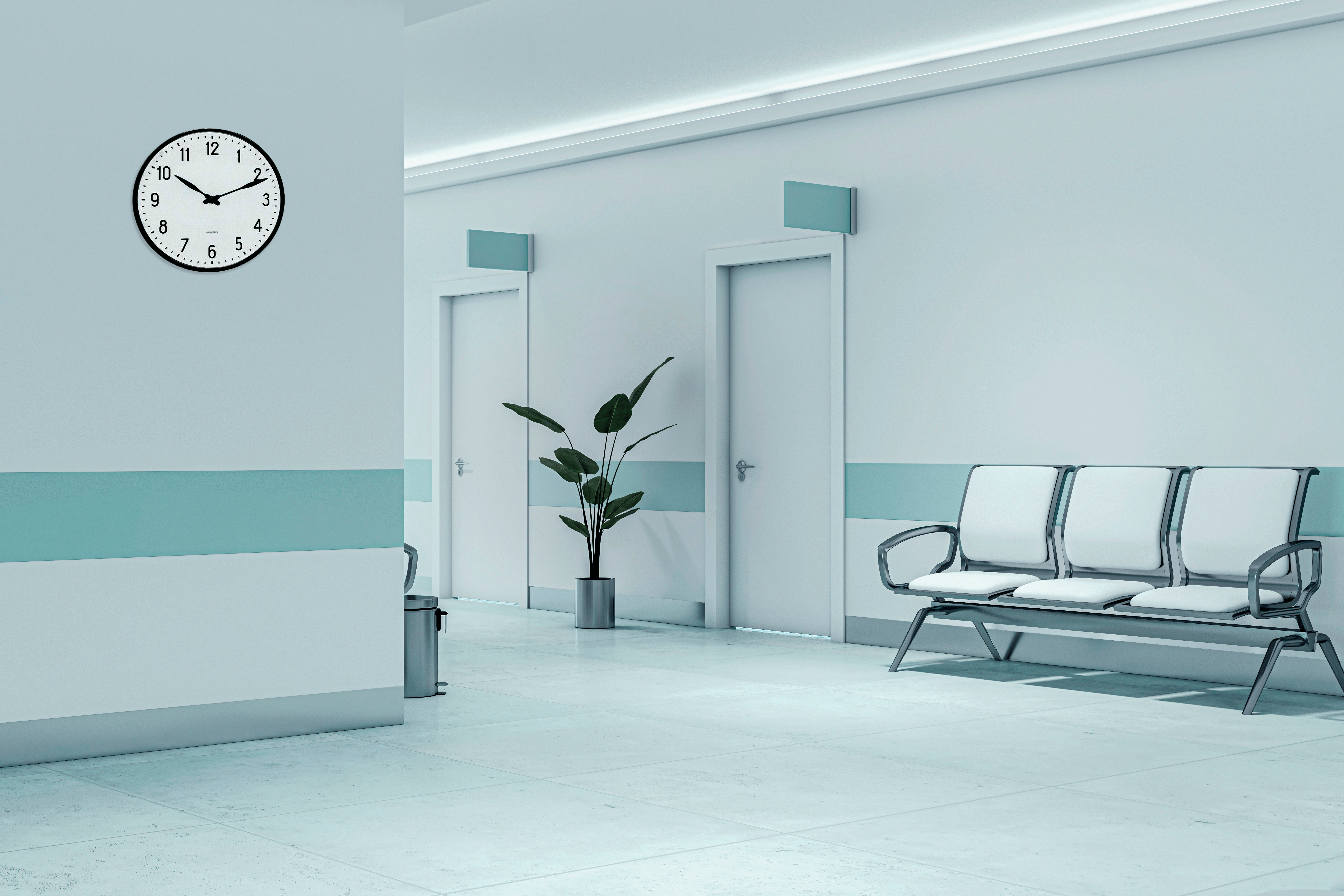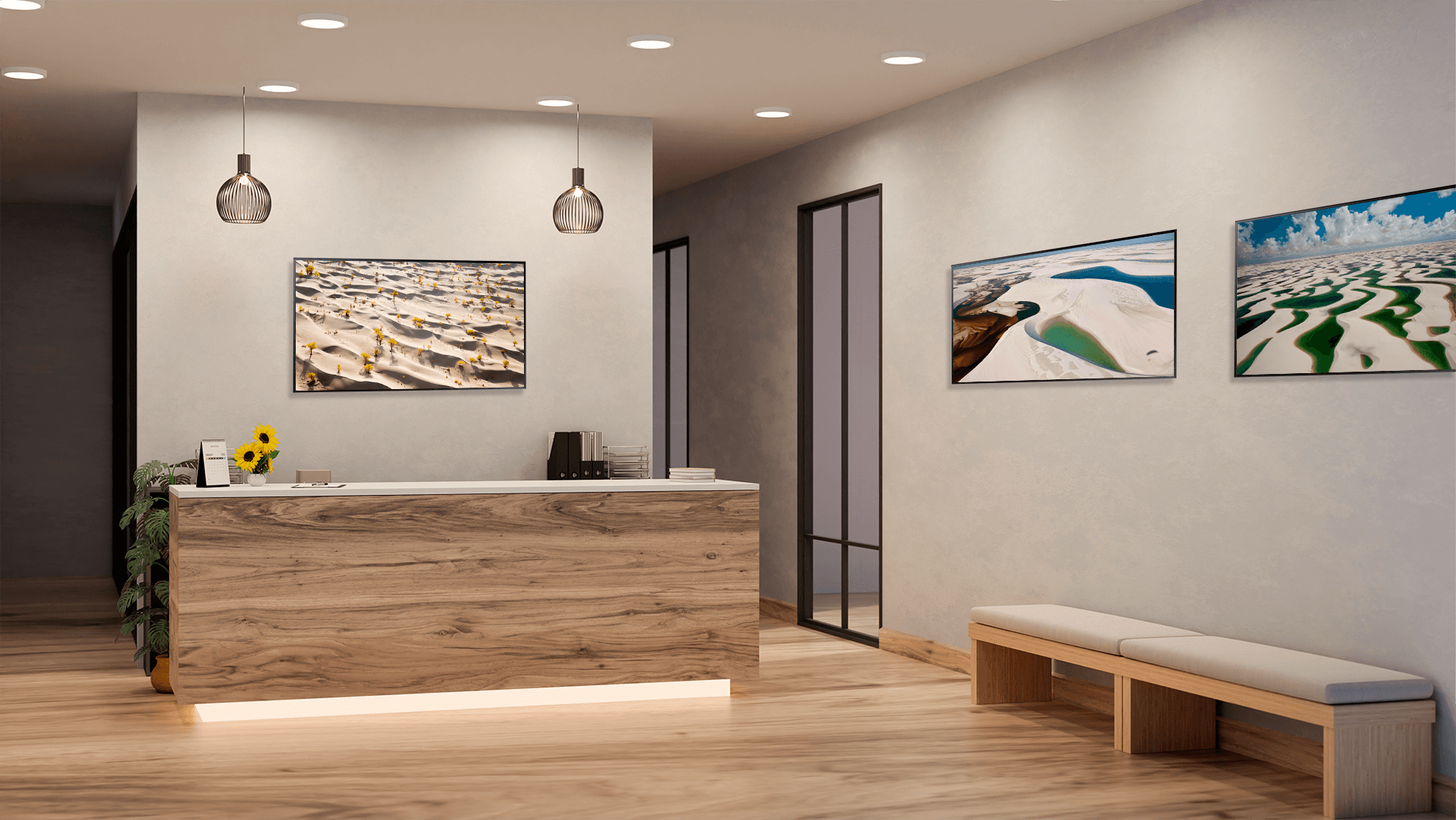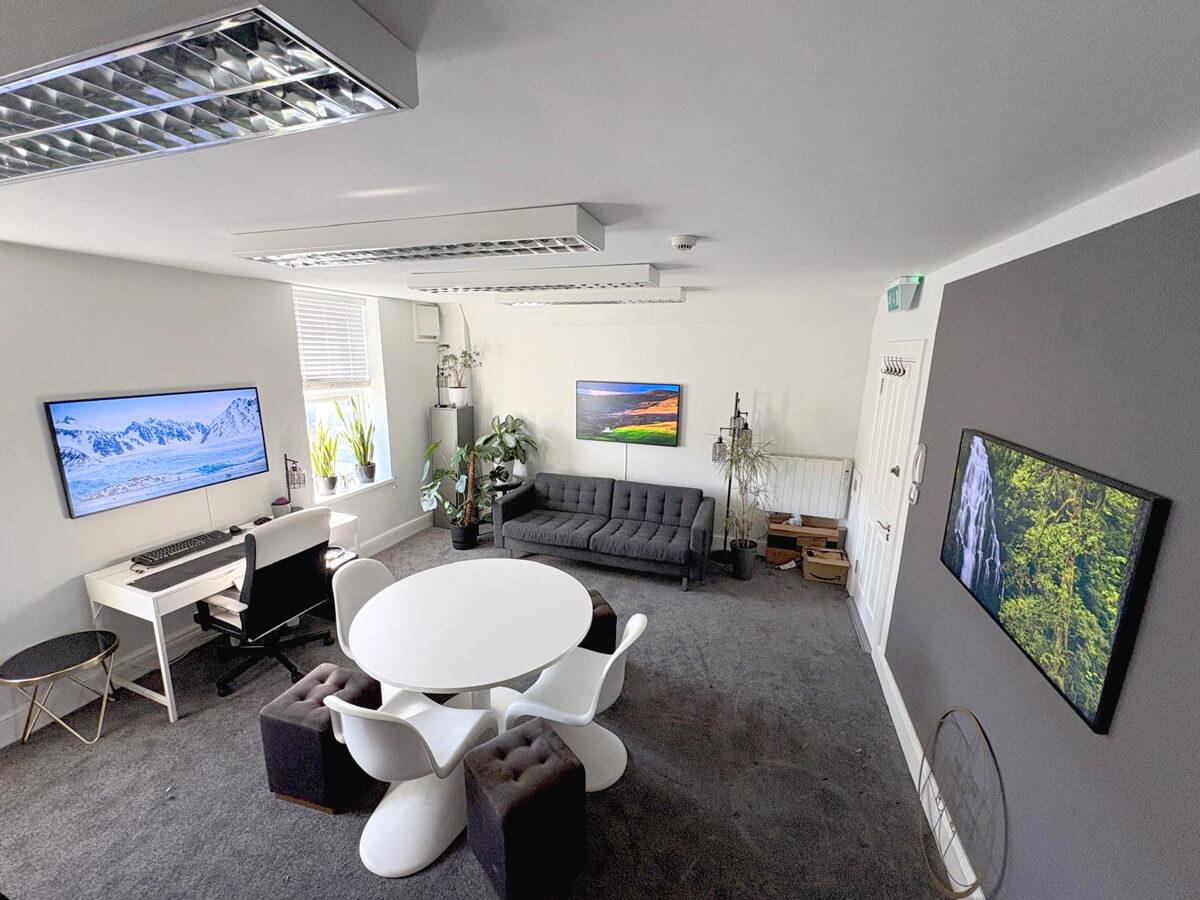Why Perceived Wait Time Matters For Patient Satisfaction (+ Free Guide Available)
- Healthcare
- Art & Technology

Illustration by Joey Guidone
Whether you own a small medical center or a large-scale healthcare facility, you’re most likely to experience an issue of waiting patients. And as we all know, the longer the wait, the higher the dissatisfaction levels. In fact, 97% of patients express dissatisfaction with lengthy wait times for their doctor’s appointment.
But there is one subtle, but important factor that has a significant impact on patient satisfaction – patient’s perceived wait time.
In this blog post, you’ll find out about the difference between actual and perceived wait time, key factors that influence perceived wait time and negative effects of prolonged wait time on patient satisfaction.
Plus, get our Free Guide to improve your clinic’s waiting room experience.
What is the wait time experience in healthcare?
Wait time experience in healthcare refers to the time patients spend waiting for various aspects of their care, such as doctor’s appointments, consultations, diagnostic tests, or treatments.
It includes the actual time spent waiting (actual wait time) and the patient’s perception of that time (perceived wait time).
Actual and Perceived wait time: what’s the difference?
We’ve all been there: sitting in the clinic’s waiting room, nervously watching the clock and wishing for the doctor’s appointment to begin… The clock arms are barely moving, and for you, it seems like eternity.
As the time passes, thoughts of work, family, and unfinished tasks flood your mind, intensifying your restlessness. How much longer am I supposed to wait?
Finally! The doctor calls your name. Hastily gathering your things, you realize that you have actually been waiting for only 5 minutes…

Plain waiting room design in a clinic
This example clearly illustrates the difference between actual and perceived wait time. While the actual wait time is a real duration spent waiting (objective), the perceived wait time is based purely on the patient’s perception (subjective).
Perceived wait time depends on a number of factors, like waiting room design, patient’s emotional state, presence of a loved one, etc.
But one thing is obvious: patient satisfaction greatly depends on the perceived wait time, not on the real time.
Why? Because regardless of how short the wait may be in reality, it’s the patient’s emotions and frustrations that linger long after the appointment.
Based on The Psychology of Waiting Lines by D. Maister, renowned American author and business consultant, here’s a simplified formula of patient satisfaction to help you better understand the idea:
Patient Satisfaction = Perceived Wait Time + Patient’s Expectations of Service
Factors influencing perceived wait times
As mentioned before, perceived wait time can be influenced by myriads of variables. In his work The Psychology of Waiting Lines, D. Maister tackles exactly these factors, which were later summarized in the following:
1. Presence of positive distractions in the waiting area
Patient anxiety, stress and other negative feelings significantly exacerbate the waiting experience, making it seem unreasonably long. On top of that,
2. Patient’s emotional state
Without any positive distractions to preoccupy their minds (e.g. by viewing eye-catching artworks on the walls, reading interesting magazines, etc.), patients are more likely to get trapped in negative thoughts and quickly become restless from the wait.
3. Patient’s uncertainty tolerance
When expected wait times are poorly defined (aka “your appointment will start soon”), this can cause a lot of stress, particularly to those who struggle with the discomfort of ambiguity. However, if it’s clear right from the start how much the wait will take, it eases their mind and lets them divert their attention to other things around them.
4. Presence of other people in the waiting area
Waiting can feel uncomfortable; waiting alone can feel twice as uncomfortable (and long!). If solo patients are encouraged to engage in conversation about the surroundings or bond over shared experiences, it can do wonders on perceived wait time and make it pass more swiftly.
5. Perceived service value
Patients are more accepting of longer waiting time, when they know that the service quality is worth the wait. That’s why a patient-centered approach in service and facility design is crucial for dealing with frustrations over wait time.

A clinic front desk and waiting area displaying WindowSight art platform on TV.
Photography by George Steinmentz
Negative effects of perceived wait time on patient satisfaction
When waiting times are perceived as prolonged, it can bring major negative consequences, such as:
1. Reduced perception of quality
Patients may feel disrespected by your facility and question the quality of service provided when they believe their time is being unduly wasted.
2. Eroded trust in healthcare providers
If the wait time is perceived as too long, the patient’s trust and confidence in your services can diminish, leading to reduced satisfaction and engagement with your facility in the future.
3. Communication breakdown
Patients who perceive long wait times may become not only irritated but also unresponsive to communication with healthcare providers, which can hinder effective dialogue and treatment process.



